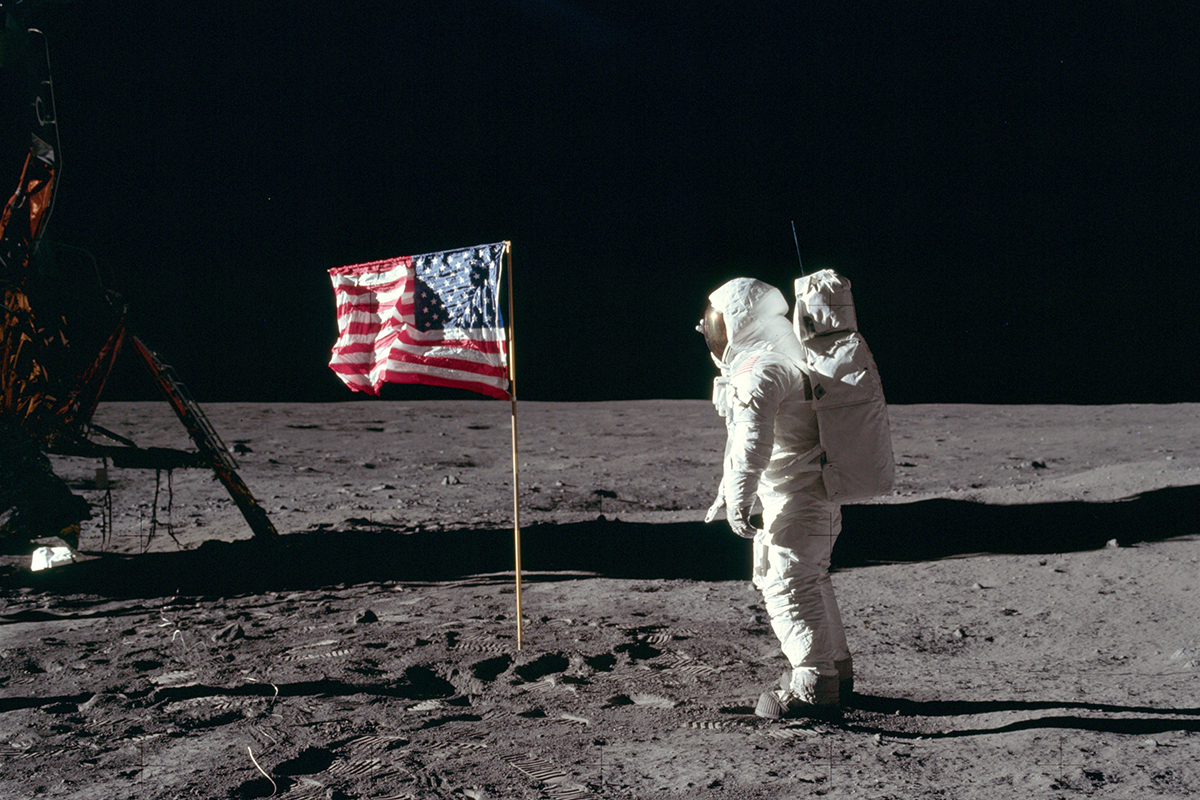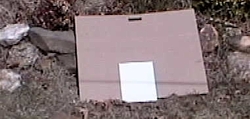90º turns of the Lunar Exploration Vehicle?
Fake: «(…)John Young, re-adjusting an antenna next to the VEL. If you look closely you will see that the VEL has turned 90º (…) It looks like it was moved and put there; on the rock below you can see a letter C (decoration mark?). You can also see the fiducials produced by the camera,(…) but the left mark is under the VEL antenna. How is this possible?».
TRUE: The high-resolution image shows that the lunar rover's turn is curved, not 90º; the letter "C" could simply correspond to a hair in the digital image (a detail present in several other lunar photos).
The antenna that "covers" the fiducial is white and has saturated that area of the image, whose brightness has "dazzled" that mark on the camera.
Compare both images by moving the slider left and right.


"Disappearing fiducials?"
Fake: «(…)The fiducials produced by the camera are also visible,(…) but the left mark is under the VEL antenna. How is this possible?»
TRUE: To better clarify the saturation of an image, a very practical example is attached below: the black shadow projected on the brown plate is seen very clearly, but a metal plate has been placed in the middle, which has saturated that area of the image and practically does not allow the shadow to be seen, giving the impression of being "on top of it."
This can be seen in lunar images where the fiducial is nullified by some very bright object.
Prop oversight?
Fake: «(…)on the rock below you can see a letter C (decoration mark?)».
TRUE: The supposed letter "C" (marked as a hair in the digital image) becomes clearer when comparing official NASA photos. On the left you see an enlargement of the rock with the "C"; on the right you see an enlargement of the same rock but without the "C"; note that this photo (catalogued AS16-107-17446) took a few seconds before than the previous.
It would be much more difficult for the supposed artificial "C" to have been added, supporting the idea that it is a hair by digitizing the photo following AS16-107-17446.
Compare both images by moving the slider left and right.






